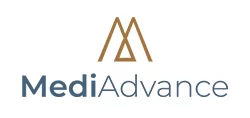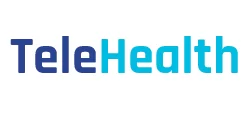Telemedicine has been around for a long time. In 1948[1], the first radiological image was sent via telephone. This was followed by many other forms of telemedicine but the birth of the internet in the 1990s laid the foundation for what is available today. South Africa has been slow on the telemedicine uptake, largely due to the reluctance of the HPCSA to allow practitioners to use it. The arrival of COVID-19, however, changed the game, and on 26 March 2020, the HPCSA issued guidelines that allow local practitioners to use telemedicine for the duration of the pandemic. An important caveat to this permission is that telemedicine is only permissible where there is an already established patient-practice relationship; it can therefore not be used to treat new patients.
So, the technology is now available but how does a doctor use it effectively?
Guidelines for using telemedicine tools.
Medical practices need to define the workflow to use telemedicine as part of the patient journey. A typical patient journey includes the following steps:
1. Patient booking an appointment
2. Scheduling and classifying the appointment in the practice diary
3. Consultation
4. Outcome of consultation
5. Payment for services
6. Follow up, if necessary
Let us look at these in detail:
1. Patient Booking: Patients must be able to make an appointment via a telephone call or using an online platform. The appointment needs to be classified as a virtual consultation. This is important for billing purposes. Altron HealthTech has an online booking facility, and your patients can book an appointment by using this website www.recomed.co.za.
2. Scheduling: If the appointment is made using the online booking facility, the practice frontline staff will be alerted every time a new appointment is requested by patients. This allows your staff to have control over the diary, and appointments can either be accepted or rejected (and offered an alternative time). The diary will reflect that appointment as a “virtual consultation”. The patient will receive an SMS confirming the date, time, and instructions on how to access the virtual consultation.
This includes a link to the platform. The practice should call patients and confirm the virtual consultation and briefly describe the process to the patient. Ask the patient to connect to the platform a few minutes before the starting time of the consultation (this can also be done by sending the patient an explanatory email). This will alleviate any problems and will save time for the medical practitioner. If the patient belongs to a medical scheme, benefit checks can be conducted to review the availability of funds for the consultation. If the patient pays cash, an email or SMS can be sent to the patient providing them with information on how to make payment.
3. Consultation: The medical practitioner will access the virtual consultation from the link in the appointment diary. It is important to identify the patient. By having an existing relationship with the patient, identifying the patient is easy. Telemedicine has its limitations in that the medical practitioner must rely solely on the subjective finding as relayed by the patient. On the other hand, reviewing patients with chronic conditions using telemedicine is easier where the patient can share data that they collect at home (such as glucometer & blood pressure readings for diabetics).
4. Outcome and follow up: The outcome of the consultation can be issuing a script or creating a referral to a specialist. Clinical notes should be kept in line with good medical practice and classified as a virtual consultation. Ideally, the practitioner should be using an EHR to capture notes associated with the consultation and generate a script or letter automatically and send these electronically to the pharmacy or specialist. The practitioner may request a follow-up consultation. This can be done by the practice on behalf of the patient, or the patient can book using the online booking platform.
5. Payment for services:If the patient has funds, the practice can switch the claim through to the funder. If it is a cash patient, the practice can send the details of the consultation by email and request payment to be made by using the practice payment methods. With increasing numbers of virtual consultations, medical practices need to choose solutions that have workflow to support telemedicine.
Email HealthTech.Sales@altron.com to get information the Altron HealthTech integrated solution for your practice.




















